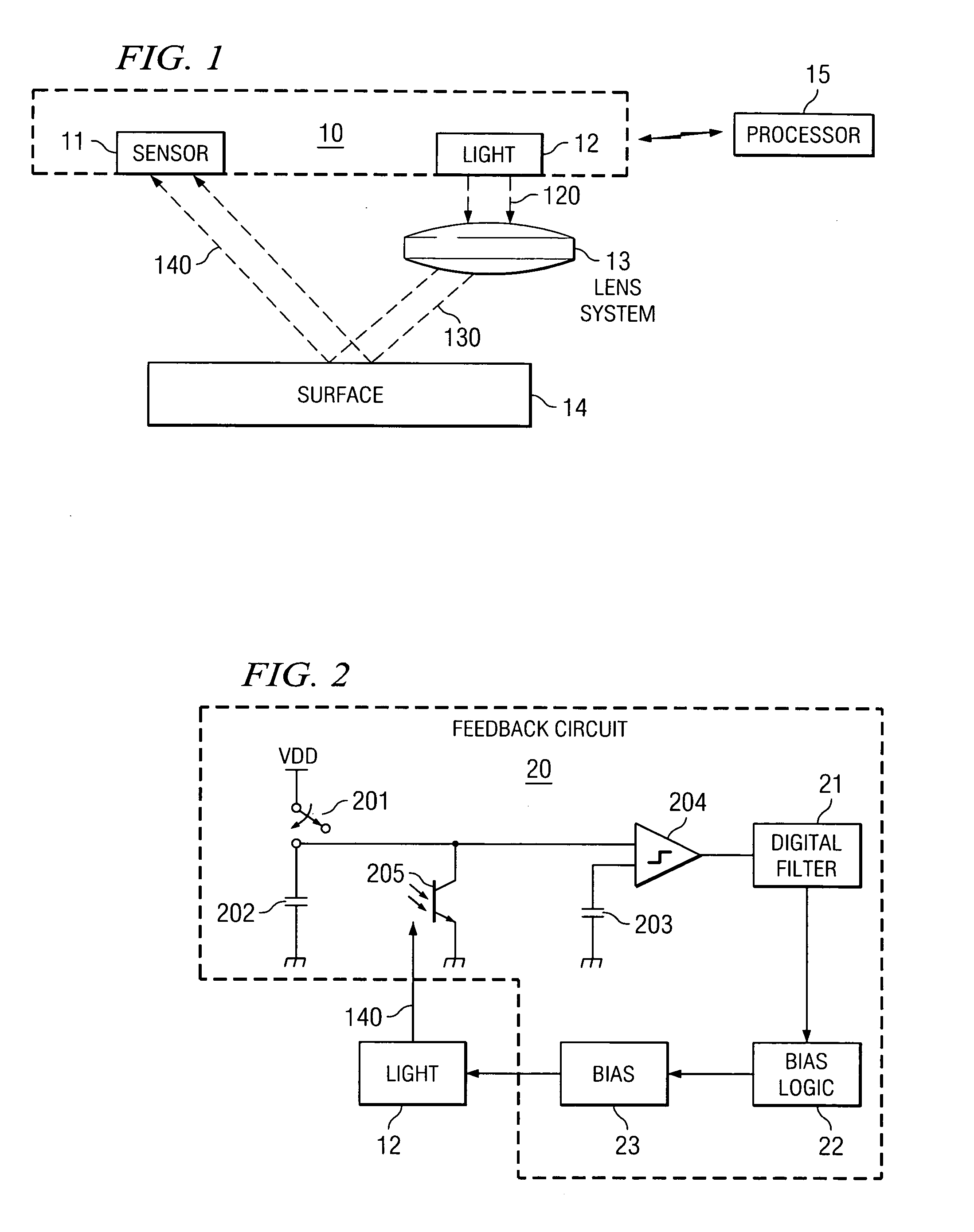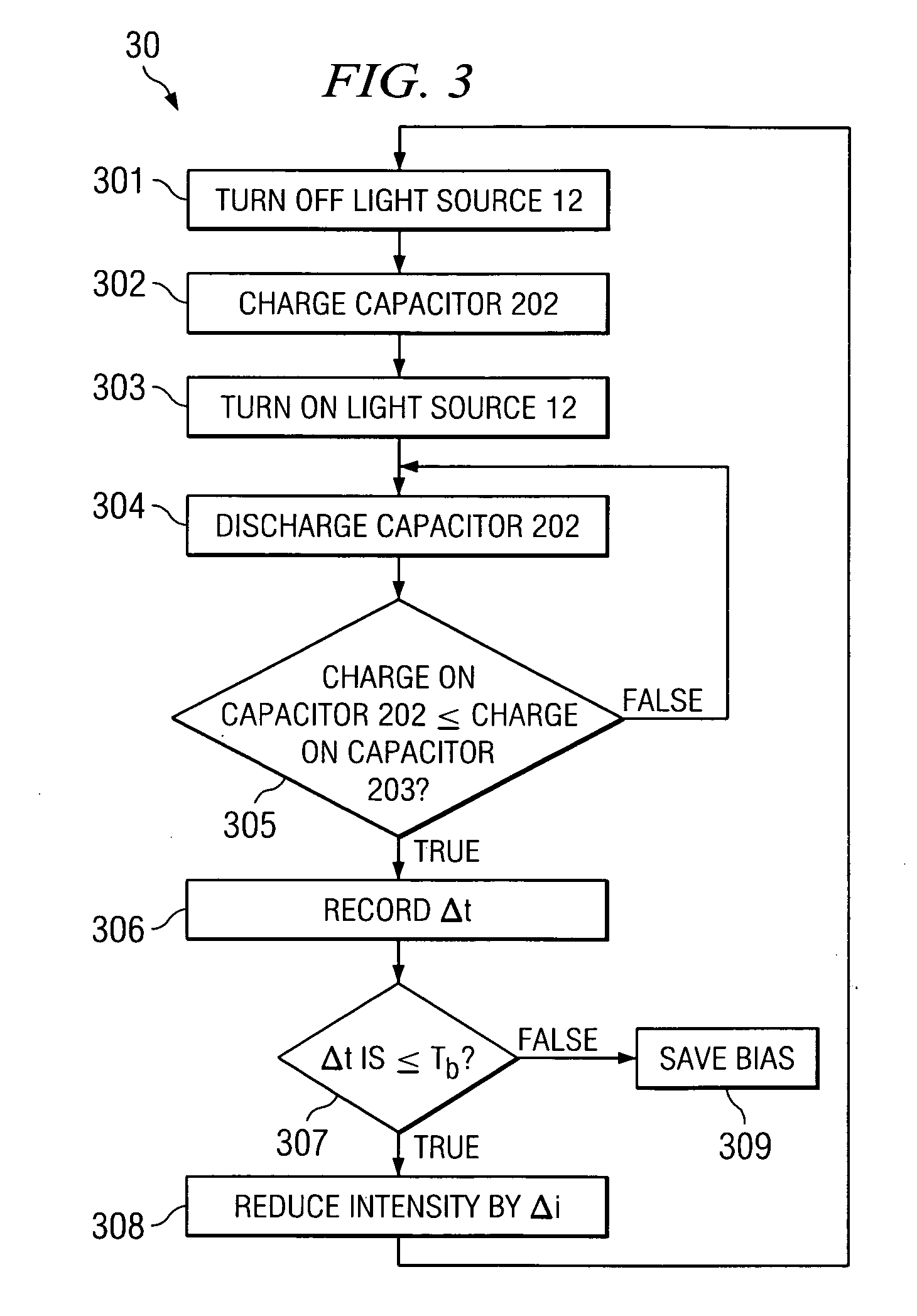System and method for calibrating the light source for an optical navigational system
a technology of optical navigation and light source, applied in the field of optical navigation systems, can solve problems such as damage to the human eye, and achieve the effect of reducing intensity
- Summary
- Abstract
- Description
- Claims
- Application Information
AI Technical Summary
Benefits of technology
Problems solved by technology
Method used
Image
Examples
Embodiment Construction
[0010]FIG. 1 is a simplified schematic side view of an embodiment of an optical navigation device 10 having light source 12 and pixel array (sensor) 11. The optical device may be located on a single integrated circuit such as circuit 10, wherein light channel 120 from light source 12 passes through lens 13 becoming light channel 130. Light channel 130 reflects from surface 14 becoming light channel 140, which then impacts upon sensor 11. Sensor 11 is any well-known sensor that operates to allow for the calculation of navigational movement by picking up reflected imperfections from a surface by a light beam projected onto the surface as the navigational device moves in relation to the surface.
[0011] If desired, surface 14 may be a prism or partially mirrored surface advantageously chosen to reduce (or otherwise modify) the intensity of light impacting sensor 11 to aid the adjustment process. Navigation device 10 can work, for example, in conjunction with processor 15.
[0012]FIG. 2 i...
PUM
 Login to View More
Login to View More Abstract
Description
Claims
Application Information
 Login to View More
Login to View More - R&D
- Intellectual Property
- Life Sciences
- Materials
- Tech Scout
- Unparalleled Data Quality
- Higher Quality Content
- 60% Fewer Hallucinations
Browse by: Latest US Patents, China's latest patents, Technical Efficacy Thesaurus, Application Domain, Technology Topic, Popular Technical Reports.
© 2025 PatSnap. All rights reserved.Legal|Privacy policy|Modern Slavery Act Transparency Statement|Sitemap|About US| Contact US: help@patsnap.com



